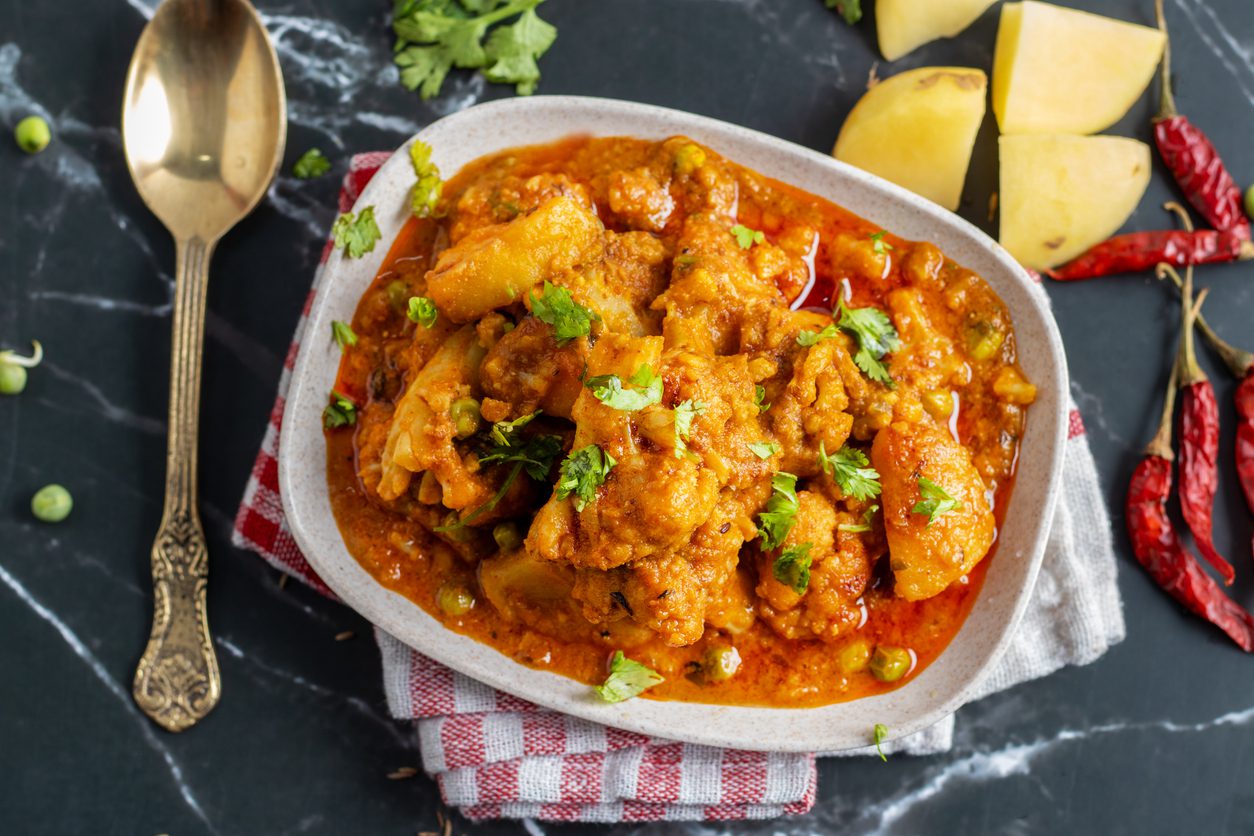Aloo Gobi Bengali-style, traditionally called Aloo Phulkopir Dalna, is a beloved dish from Bengali cuisine made with potatoes (aloo) and cauliflower (phulkopi). It’s simmered in a lightly sweet, spiced tomato-based gravy that’s fragrant with whole garam masala (like bay leaf, cardamom, and cinnamon), often finished with a touch of sugar and sometimes ginger or green peas.
🇮🇳 Aloo Gobi Bengali Style (Potato and Cauliflower Curry)
Description
Recipe Description:
This Bengali-style Aloo Gobi brings comforting East Indian flavors to your table in a fraction of the time—thanks to Usha’s Curry Starter. Potatoes and cauliflower are simmered with fragrant spices, green peas, and tomatoes, all in a mild, well-balanced curry base. A hint of garam masala gives it that signature Bengali warmth. Perfect with rice, roti, or Naan, it’s a delicious way to explore regional Indian home cooking with a shortcut that doesn’t compromise on flavor.
Ingredients
Lightly fry vegetables:
Heat 1 tbsp Mustard oil in a pan.
-
Toss cauliflower and potatoes and shallow fry until lightly golden. Remove and set aside.
Tempering Spices:
-
Tempering
In the same pan, add Curry starter. Once it begins to sizzle, reduce heat and add bay leaf, cinnamon stick, and whole cardamom. Stir until fragrant and then add, Tikka Masala, Keema Masala, Cumin powder, and dry red chili. Let spices splutter. Add 2Tbs water if it appears dry. Do Not Burn Spices.
Build the base
-
Add chopped tomato and cook for 5 minutes until soft.
Add veggies
-
Return the sautéed potatoes and cauliflower to the pan. Add water and green peas. Stir to coat everything in the masala.
Simmer
-
Cover and cook on low for 12–15 minutes until the potatoes are fork-tender and cauliflower is cooked but not mushy. Stir occasionally to prevent sticking.
Finish
-
Add garam masala and a small pinch of sugar. Stir gently and cook uncovered for 1–2 more minutes to let the flavors meld. Salt to taste.
Garnish & Serve
-
Top with fresh cilantro and serve hot with rice, roti, or Bengali-style luchis.
Note
What Defines a Bengali-Style Curry?
1. Use of Panch Phoron (Five-Spice Blend): If you have it!
Bengali curries often start with tempering panch phoron—a mix of whole seeds (fenugreek, fennel, cumin, nigella, and mustard). It gives a fragrant and slightly sweet-bitter base flavor. Mustard and Cumin are in the spice blends for Keema and Tikka Masala so if you want a totally Bengali Style Curry, you can add these other ingredients in small amounts.
2. Mustard Oil: ✅
Cooking in mustard oil is a hallmark of Bengali cuisine. It brings a pungent, bold aroma that’s deeply rooted in the regional palate.
3. Balanced Flavors: ✅
Bengali curries often strike a balance between sweet, spicy, and tangy. Many dishes include a pinch of sugar, especially in vegetarian or festive curries.
4. Tomato and Ginger Bases: ✅
Instead of heavy cream or yogurt, Bengali-style curries typically use tomatoes, ginger, and sometimes green chilies to form the sauce base.
5. Less Cream, More Simmer: ✅
These curries are generally lighter than North Indian curries—more like spiced stews or braised vegetables with richly flavored, thinner gravies.
6. Distinct Garam Masala: ✅
Bengali garam masala is usually a mix of cardamom, cinnamon, and cloves, ground into a fine powder and added toward the end.


